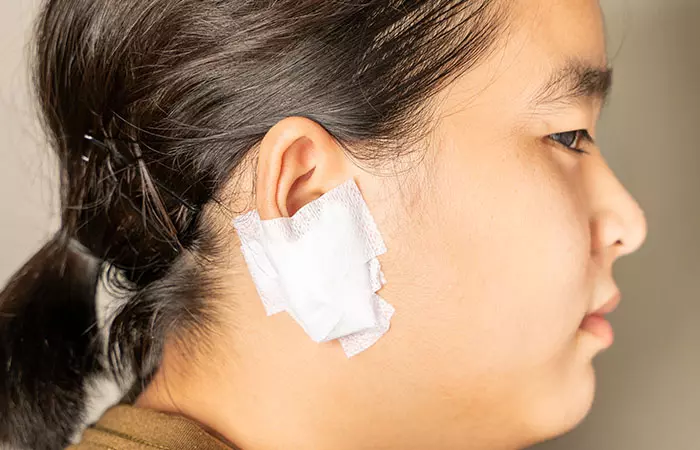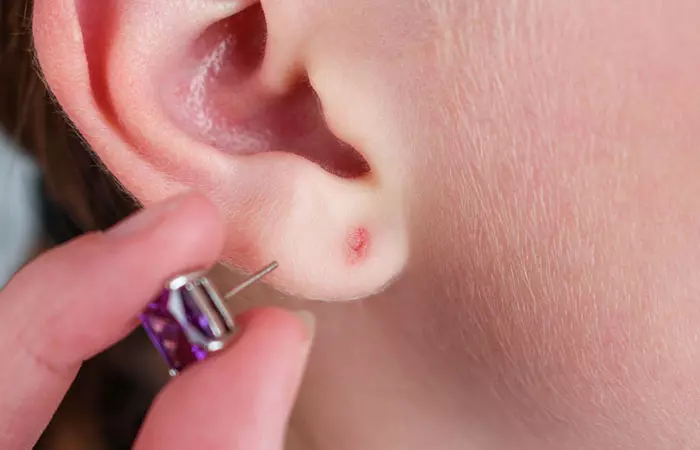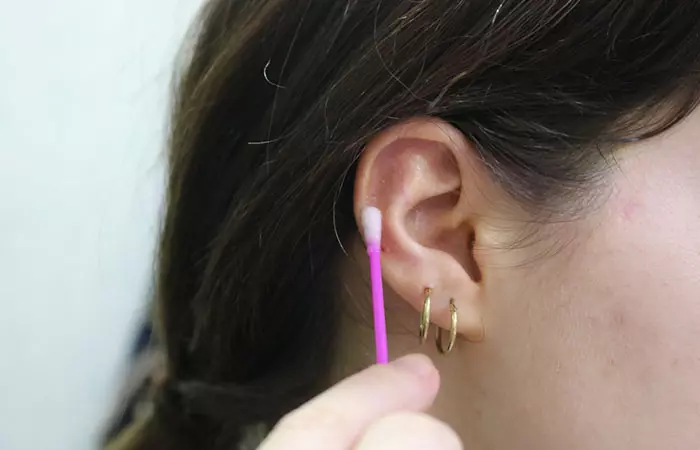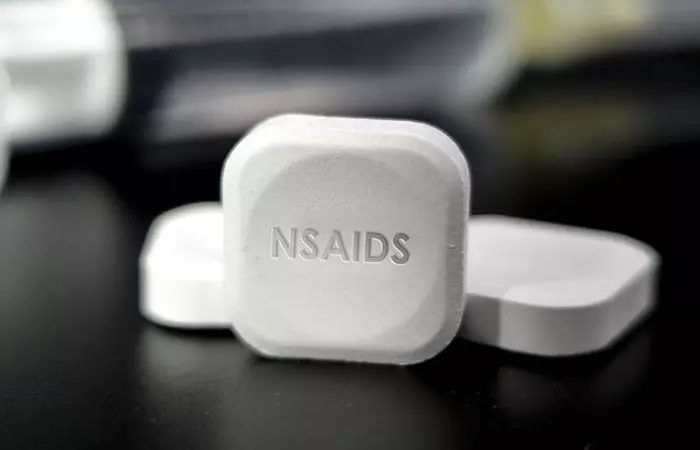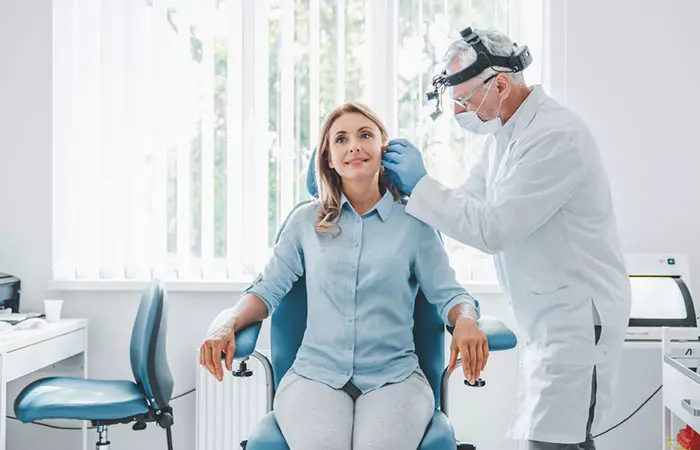Causes Of An Ear Piercing Infection
An infection should not occur if the piercing is done in a hygienic place, under the guidance of a well-trained professional, and with properly sanitized tools. However, a majority of piercings get infected. A study conducted on 1,000 nurses with piercings found that cartilage piercings (32%) were more prone to infection than earlobe piercings (29%) (1). Research suggests that there is a higher incidence of ear infections due to the low blood supply at the ear that impacts wound healing (2). Apart from unhygienic practices, there are many causes for an infected ear piercing, the most common being a bacterial infection. Although several microorganisms can lead to body piercing infections, Staphylococcus and Streptococcus species are the most common bacteria associated with an infected piercing (2). As mentioned before, an ear piercing is an open wound. If bacteria are allowed to come in contact and fester around the area, it disrupts the normal healing process and leads to bacterial infections. An infection can also occur if you frequently touch your piercing before it is healed. It may also be caused if the jewelry you use is rough or the earring clasp is too tight. Avoid wearing nickel earrings as they tend to trigger allergic reactions that may indirectly lead to infections due to itching or inflamed skin (3). This is recommended for everyone, not just those with a nickel sensitivity. Irregular or faulty cleaning techniques can also be a reason for infections. Even a quick swipe with dirty hands can lead to an infection. So the piercing needs to be handled with the utmost care. Another common factor that may influence your piercing being more prone to infection, is whether or not a proper piercing needle is used. A piercing needle is hollow and essentially cuts out a clean, tiny hole. A non-hollow piercing gun pushes the skin to the side, which makes it take longer to heal and can attract more bacteria. But how do you know that your piercing is infected? Read the next section to know what an infected ear piercing looks like.
What Does An Infected Ear Look Like?
It is easy to confuse the normal piercing aftermath with the signs of an infection, as a certain degree of pain and redness is common for a new piercing. You may also notice a small, bumpy appearance called granulomas, which are also common for a new piercing. However, when an infection occurs, the symptoms are more pronounced and aggressive. An infection in the ear cartilage is even more severe due to the restricted blood supply in the area and is harder to heal. Restricted blood flow can lead to the death of tissues, a condition called gangrene, that may cause a bacterial infection (2), (4). Therefore, it is crucial to recognize infection symptoms as soon as possible and get the required medical treatments done immediately. Here are some common ear-piercing infection symptoms to look for (5):
More and prolonged redness than usual Soreness and a warm feeling in and around the piercing Swollen, tender, or itchy skin around the piercing Crusts form around the piercing Boils from the pierced area Yellow, pus-like discharge that may or may not be smelly Fever and chills
Recognizing an ear piercing infection is important but then comes a more crucial part- its treatment. You need to learn how to clean a ear piercing properly to avoid infection in the first place, and prevention methods are key to a quick recovery. Learn how to treat infected ear piercings in the next section.
How To Treat An Infected Ear Piercing
Most ear piercings are not severely infected and exhibit mild symptoms. If you catch it early enough, good for you! You may easily treat an earring hole infection at home in a few simple steps.
1. Use A Saline Wash
Either get a store-bought sterile saline solution or mix half a teaspoon of salt with 1 cup of warm water to make your own. Soak a cotton swab in the saltwater solution and gently clean both sides of your ears and the piercing. Avoid using gauze, cotton balls, or alcohol to prevent irritating the pierced skin. Ellinia, a blogger, shares her experience with an infected piercing. She writes, “I had to close this piercing and it sort of gave me a scar on my left ear. Isn’t pretty as well. Just take good care of your piercings and disinfect it daily with sea salt + water and it’ll be alright (i).”
2. Use An Ointment
After you have cleaned the area with saline solution, apply a thin layer of an over-the-counter antibiotic ointment. Use a clean Q-tip to apply the ointment on the pierced skin to prevent further irritation and worsening of the infection.
3. Use Drugs For Pain
For occasional pain and swelling, you may take over-the-counter nonsteroidal anti-inflammatory drugs (NSAIDs) for relief. However, do not use these drugs for regular and severe pain.
4. Avoid Contact
Avoid keeping the piercing wet and let it air-dry. Touch your ears as little as possible and only with clean hands. Also, avoid wearing jewelry until the infection has healed. If the infection has formed around the earring, do not move it too much as this may introduce more infection-causing bacteria and aggravate the wound further. Usually, an earlobe piercing heals within 2 weeks with proper care and treatment. You can reduce the risk of infection by following the right post-piercing care instructions as recommended by an expert piercer or your healthcare provider. Sometimes, the infected ear piercing can become too critical to be treated at home and require medical assistance. If you want to be extra careful as your infected piercing is healing, you can also apply a small band-aid to prevent any more bacteria or dirt from coming in contact with the wound. Apply the ointment and cover it with a small, transparent band-aid. Read the next section to learn when to seek medical care for ear infections.
When To Visit A Doctor To Treat An Ear Piercing Infection
In rare cases, an ear piercing infection can become a severe wound, and medical care is necessary to stop the further spread of the infection and the treatment of the wound through oral antibiotics and other antibiotic treatment. An untreated infection can lead to cellulitis where the infection spreads into the bloodstream. In worst cases, it can even lead to a systemic infection that spreads to the rest of the body. If you notice these signs of infection, you should seek immediate medical help:
Your earring is stuck inside the earlobe. Redness is spreading to the upper part of the ear. The infection has formed an abscess. You are experiencing severe or throbbing pain. A smelly discharge leaks from the infected skin. You have a fever with chills.
However, a severe ear infection only occurs in a few cases. With routine care and precautionary measures, you can easily avoid an ear-piercing infection. Scroll to the next section for some precautionary steps that you can take.
How To Prevent An Ear Piercing Infection
Ear piercings are common and safe to get when done in reputable salons. You can avoid an ear piercing infection easily if you are careful from the start and follow the right aftercare tips religiously. Here are some common precautionary measures that you should take to avoid the risk of infection: How long will my new ear piercing take to heal? A new ear piercing can take anywhere from 6 weeks to 12 months to heal completely depending on the exact piercing location. What is the best antibiotic ointment for ear piercing infection? Antibiotic creams like Neosporin or Bacitracin are considered best for treating an ear-piercing infection. Should I remove the earring if my ear piercing is infected? It is not necessary to remove the earring in the case of a mild infection. However, if there is severe pain, swelling, pus discharge, or fever, it is wise to promptly visit your healthcare provider and let them remove it. How soon after getting a piercing can the ear become infected? An ear piercing can get infected within 3-7 days of the piercing. If you are looking for some more expert advice on how to recognize and treat an ear piercing, you will get all that information in this video from a medical professional. Check it out now! (i) My Piercings. https://mischievousmagician.blogspot.com/2015/01/my-piercings.html
